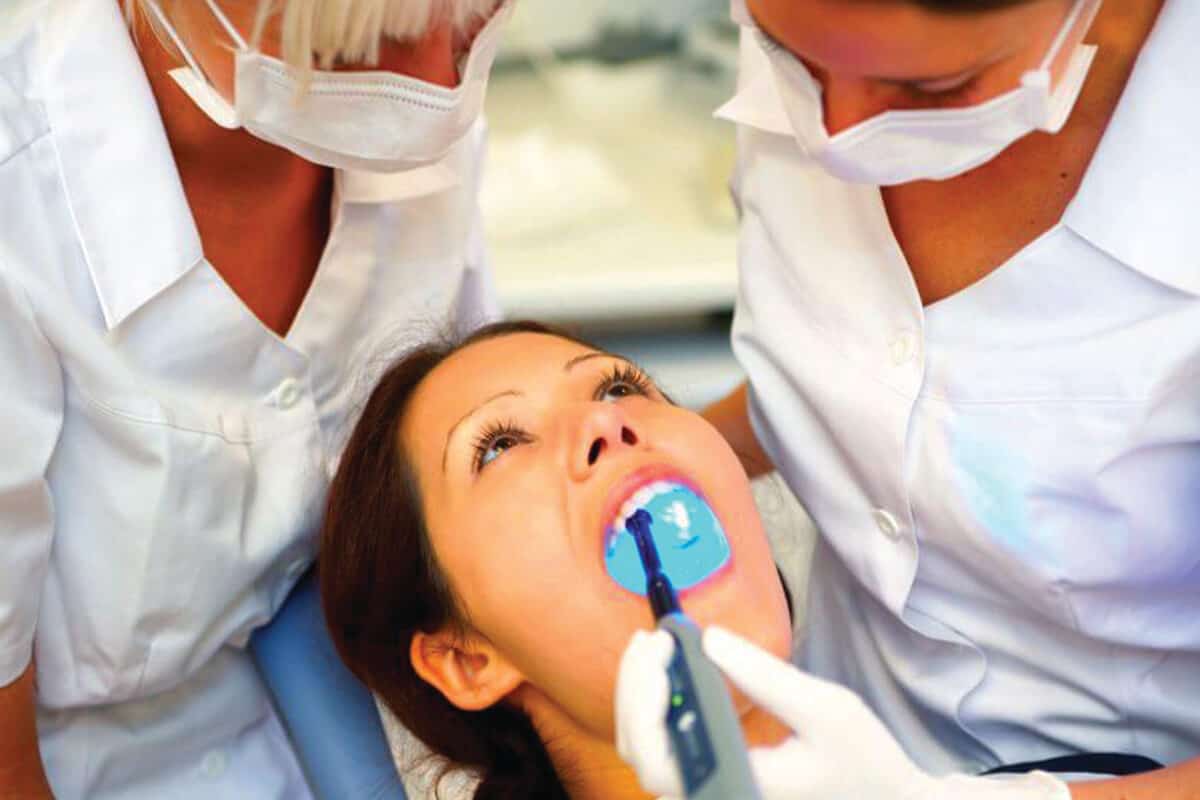Gingivitis and periodontitis are the two basic stages of gum disease. Gingivitis is an early and mild stage of gum disease that can usually be reversed by renewing your commitment to brushing and flossing regularly and having your teeth cleaned occasionally by a dentist. Left unchecked, though, gingivitis can progress to the much more serious periodontitis.
Periodontitis causes your gums to pull away (recede) from your teeth. As your gums recede, pockets are formed along your teeth that become infected and fill with pus. As those pockets become deeper and deeper and more infected and inflamed, more and more tissue is destroyed and root tissue is exposed to infection. Overtime, periodontitis will cause the destruction of so much gum tissue and bone matter that your teeth will get loose. A renewed dedication to daily dental hygiene is not enough to reverse periodontitis and address the serious effects of that disease. Treating serious periodontitis requires surgery. There are two options for surgery to treat serious periodontitis: traditional flap surgery or laser-based (LANAP) surgery. Here’s an introduction to LANAP vs traditional gum surgery in Los Angeles.
Traditional flap surgery
During flap surgery, your periodontist in Los Angeles makes an incision in your gums and peels back the tissue using a scalpel. Cutting into and peeling back the gum tissue lets your periodontist access the roots of your teeth. Once that access has been established, the periodontist will clean and reshape the roots and tissues to eliminate infection and make it more difficult for any new infection to establish itself. Once the infection has been addressed, the flap cut into your gums will be stitched shut with sutures.
Traditional flap surgery is more invasive and painful than laser-based surgery and thus requires a longer recovery time. Because it is more invasive, there is an increased risk of infection, though the risk of infection is low and can be minimized by careful adherence to your dentist’s aftercare instructions. The advantage of flap surgery is that it is appropriate for treating both mild and severe cases of periodontitis. LANAP surgery, on the other hand, is not appropriate for some severe cases of periodontitis.
LANAP surgery
LANAP is an acronym for Laser-Assisted New Attachment Procedure. LANAP was approved by the United States Food and Drug Administration in 2004. LANAP uses lasers to remove infected gum tissue and harmful bacteria more gently than traditional flap surgery and without any scalpel incisions. Using lasers, a periodontist near you can precisely remove only diseased tissue without removing or negatively affecting healthy gum tissue in the same area.
Soft tissue lasers remove diseased tissue, clean pockets, compress healthy gum tissue against the surface of your teeth’s roots and seal the treated pocket with a clot — and without any need for surgical glue or stitches.
Because LANAP surgery is performed without making incisions, it is a much less invasive and cleaner procedure than traditional flap surgery. Patients experience far less sensitivity, bleeding and have a significantly reduced risk of infection. The recovery period following LANAP surgery may be as short as 24 hours and typically involves only minimal discomfort.
Yes, LANAP surgery is a good option for treating all but the most serious cases of periodontitis. Having said that, it’s a far less attractive option than preventing gum disease in the first place or reversing it while it is in its minor gingivitis stage. If you have questions about the health of your gums or the most appropriate method for treating your periodontitis, ask a periodontist near you about the pros and cons of undergoing LANAP vs traditional gum surgery near you.
